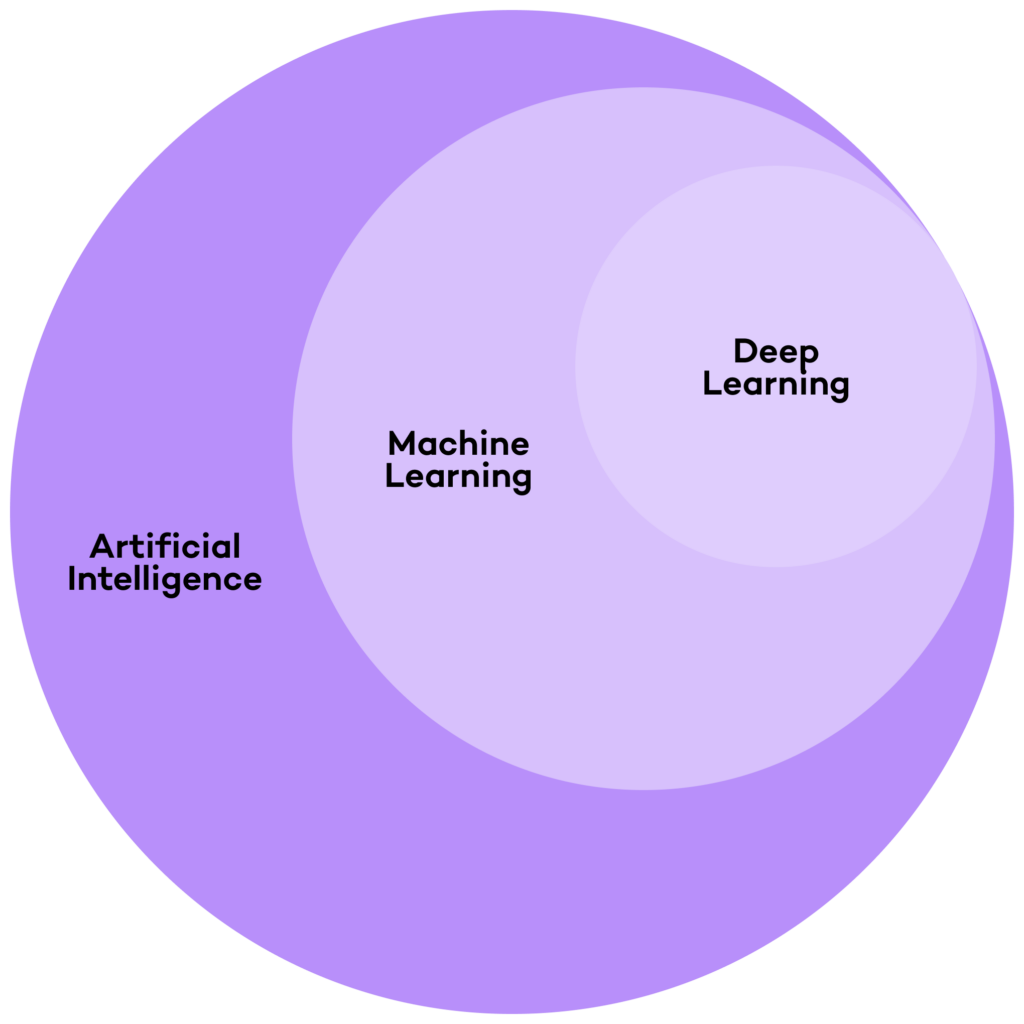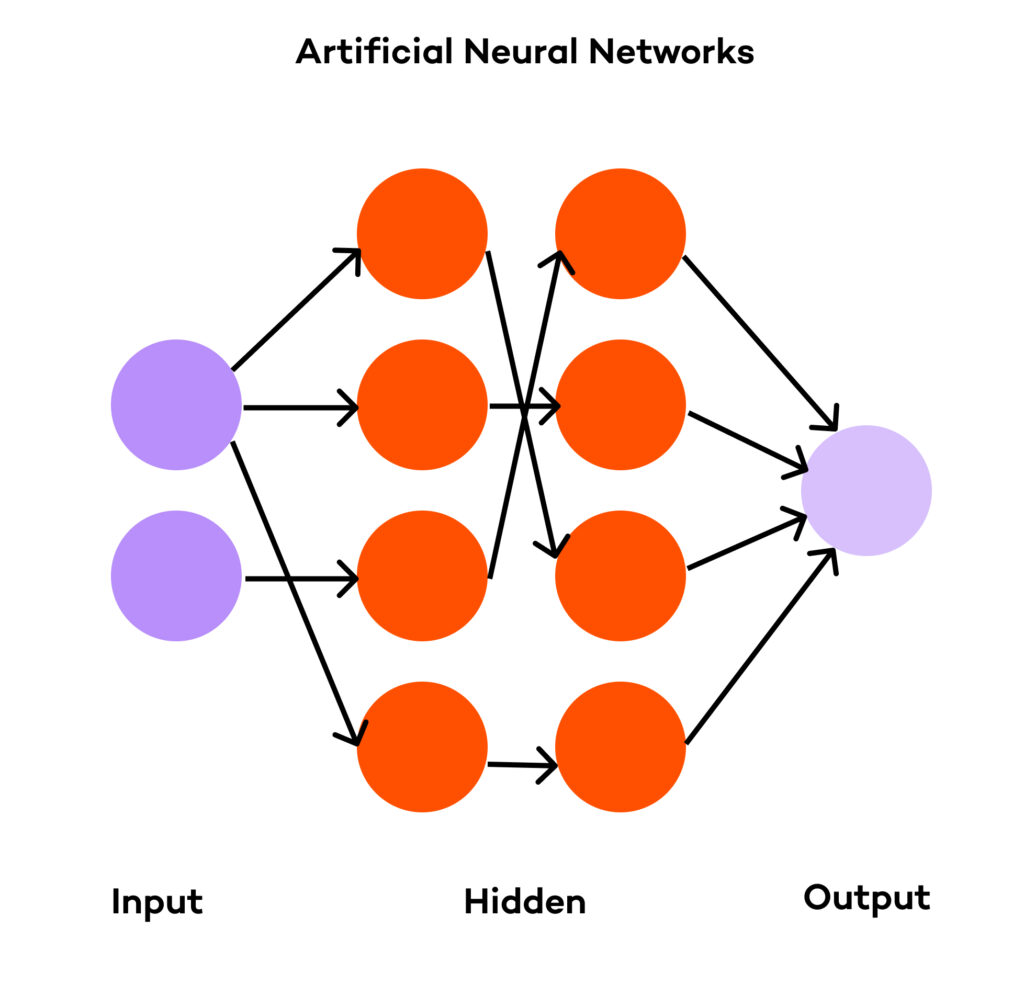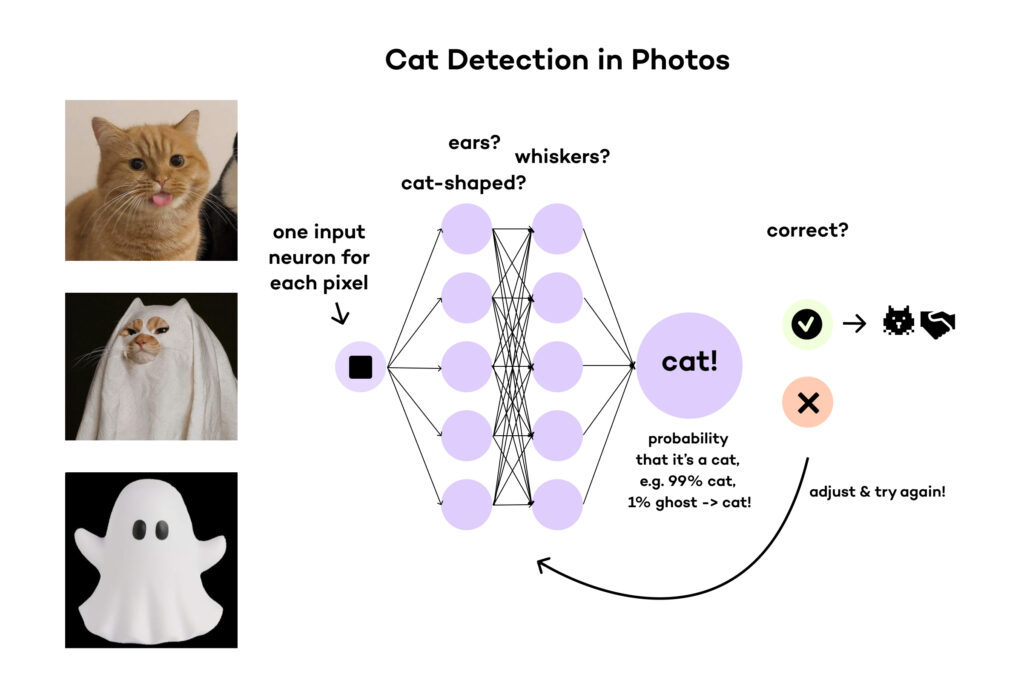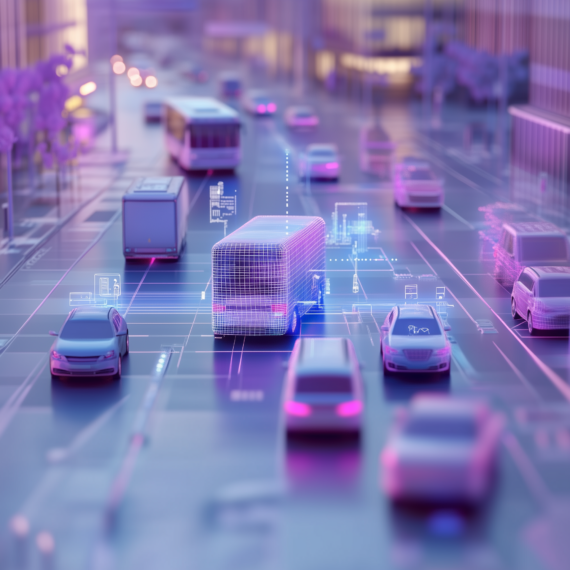When browsing the web and talking with friends or colleagues, you may realize that the term “AI” (artificial intelligence) is used almost excessively. But could you easily explain to someone what AI actually is? And how does it differentiate from Machine Learning (ML) and Deep Learning (DL)?
In this article, we take a closer look at the terms buzzing around the world right now, discuss explicit examples, and answer some of the questions that might have crossed your mind already. I am kindly supported by my colleague Marshall Mykietyshyn, who works as a Data Scientist at diconium data.
Note: This article is meant as an introduction to AI. You are already an AI expert? Feel free to check out our various in depth blog posts about more specific topics.
Quick Overview of the Differences between Artificial Intelligence, Machine Learning, Deep Learning, and Generative AI
These topics already play a large role in building applications, such as our AI-powered
Product Search, products, and intelligent machines. They are integrated into the daily work of numerous companies around the world, but also affect our daily lives, for example, when using tools like Siri or ChatGPT. Therefore, it’s quite useful to understand at least a bit about what’s happening in the background.
It can be difficult to differentiate between the various terms used to describe AI, but let’s face it, using “AI”, “Machine Learning”, and “Deep Learning” synonymously is not correct. Although they are related, AI is an umbrella term that encompasses all technologies in this field. Machine Learning comprises a specific subset of AI, and Deep Learning is an even more specific subset of Machine Learning. With this in mind, you can see that all Machine Learning is AI, but not every AI is Machine Learning.

And what about Generative AI (GenAI)?
There’s a lot of confusion when it comes to generative artificial intelligence, also known as GenAI. It falls in the realm of ML and is a form of AI that creates new content. These models respond to user inputs in the form of “prompts”, and are a form of Deep Learning (DL), which is defined below.
Today, we focus on the first three systems, AI, ML, and DL. Knowing their characteristics and different resource and infrastructure requirements will help you make the right choice for your upcoming project. Let’s have a closer look at them.
What Is Artificial Intelligence (AI)?
AI is part of computer science and describes computers and machines that imitate human intelligence in general. Humans have the cognitive ability to solve tasks and problems, and to learn while doing this. AI attempts to mimic this behaviour, while also being able to work with amounts of data larger than any human could comprehend. However, to this point, AI is only able to mimic human intelligence in the specific task it was trained on or designed for. This includes Generative AI, which can mimic a human’s ability to think, reason, and converse but is limited in its reliability on any one topic. Being widespread, AI plays a large role in IT, software development, finance, security, entertainment, and almost endless fields of work and the environment.
Examples of AI applications
AI systems that don’t fall under the paradigm of ML are usually rule-based systems. This means that a human needs to program exactly how the system should react to each possible input. One example of rule-based AI systems is Expert Systems, which leverage human expertise to solve specific problems. In these systems, programmers set predefined rules that dictate how the system should respond when processing the provided data. Expert Systems are used to assist decision-making or to make recommendations in various fields, such as engineering and finance.
When Deep Blue defeated a chess champion
The famous chess computer Deep Blue from decades ago is another example of a classical AI system. It won several chess games, ultimately defeating world chess champion Garry Kasparov in the 1990s. Deep Blue was programmed with an enormous amount of chess knowledge, including game strategies, and it could evaluate potential moves using a rule-based approach.
A glimpse into the future – Artificial General Intelligence (AGI)
Artificial General Intelligence, also known as “general AI”, is the kind of AI often seen in the movies, for example, Scarlett Johansson’s role in Her or Skynet in Terminator. AGI currently doesn’t exist in reality, but still falls under the AI umbrella. It’s also an example for what is AI but not ML.
Can AI replace coding?
No, or at least, not yet. AI is not able to fully replace human coders at this point. It can’t understand complex, context-specific problems in the way skilled humans can. It’s generally unable to find its own mistakes unless specifically asked to, and even then, it does not find them reliably. Also, humans are more likely to create innovative algorithms or architectures implemented to suit the client’s individual needs. On the other hand, AI is a strong tool for developers since it can create or optimize code and detect bugs in code. AI chatbots like Github’s Copilot, which have been fine-tuned for coding applications, can provide genuine value to developers.
What Is Machine Learning (ML)?
ML is an area of AI that enables machines to learn from large amounts of structured and unstructured data. A ML system doesn’t follow a pre-defined set of rules like other forms of AI, such as Expert Systems. Instead, ML algorithms learn to detect patterns in the training data, and can subsequently be used to make predictions based on those patterns, when given similar data. In general, each ML architecture and algorithm is best suited to a specific type of problem. For example, you need a different algorithm for making predictions about future events than for identifying objects in images. In order to choose the right ML algorithm, and prepare the data properly, a human expert is generally required.

How precise can ML predict?
Machine Learning is not a crystal ball. It cannot predict everything happening in the future since the environment is in constant change. In nature, politics, and many more fields, unexpected events or actions will always happen. Just because more past data is provided, doesn’t mean a ML system can predict the future more exactly because of the uncertainty of environmental conditions. One must always remember that a ML system is trained on a specific set of data, and that carries with it implicit assumptions about the world in which it is making predictions. If the conditions that produced the training data change, the system will no longer have an accurate understanding of the world, and its predictions will no longer be reliable.
Practical use cases of Machine Learning
Provided, that there is enough data to evaluate, ML systems can predict, at least to some extent, the future. They can recognize certain patterns in the data and detect anomalies. Because of that, forecasting is one of the most popular use cases, for example in the form of sales forecasting. In this case, the pattern the algorithm is learning is the seasonal trends of demand. Product recommendations can also be improved by a ML system. Amazon, for example, recommends new products to users based on their search and purchase history and also shows products purchased by people with similar interests. In this case, the algorithm finds patterns in groups of items that are often purchased together or which share relevant characteristics. Within the banking and finance sector, ML systems are used to detect fraud.
What’s the difference between AI and Machine Learning?
Technically, there isn’t a difference between them, since ML is a subset of AI. But what separates ML from other forms of AI is that ML systems are specifically developed for pattern recognition to predict outcomes based on large data sets. AI that is not ML must be explicitly programmed, as seen in the case of Deep Blue.
What Is Deep Learning (DL)?
Deep Learning can process vast amounts of structured and unstructured data. It always involves a so-called “artificial neural network” architecture, which is one form of machine learning.
What are Artificial Neural Networks (ANN) and how do they work?
Artificial neural networks are inspired by brain networks. The ANN’s “neurons” are connected through so-called weights, which can be compared to brain synapses, and are grouped into layers. The simplest classification of these layers is dividing them into the first (input) layer, all the layers in the middle (hidden layers) and the last (output) layer. Information is passed through the network, from input to output.

The input layer
The first layer represents a set of features which define the input. For example, a sales forecasting system may have input features like day of the year, day of the week, whether it is a holiday, etc…
The output layer
The last layer represents the features the model is designed to predict. In the sales forecasting example, this would be volume of sales.
And what’s happening in between?
Every neuron in a layer is connected to each neuron in the previous and next layer, with these connection strengths represented by the aforementioned weights. As the input information travels through the network, the values of these weights are iteratively updated. Each time the training data is provided to the network, it is called an epoch, and allows the weights to change a little bit, getting the predicted output closer to the true value. This is done until the error on the training data predictions plateaus. At this point, the model is considered to have learned the patterns in the data.
In which fields does Deep Learning play a role?
Deep Learning is omnipresent in computer vision, which enables machines to interpret and understand visual information from the world. Specific DL use cases in the field of computer vision are facial recognition used for security purposes or object detection in autonomous driving, e.g. traffic sign recognition. An exciting use case of object detection is tumour detection in cancer patients. Here, DL takes on the role of a diagnostic tool. The conversion of images to texts, autonomous vehicles and robotics are also common computer vision applications.
What’s the difference between Deep Learning and Machine Learning?
Deep Learning is not the only form of machine learning to use a neural network architecture. What separates Deep Learning from other ANNs is the number of hidden layers, with Deep Learning models having hundreds or thousands of hidden layers. Due to the large number of layers, DL models require significantly more data for training and consume more computational resources than classical ML algorithms. However, this also allows them to solve much more difficult problems, by finding more complex patterns in the data.

Can You Build Your Own AI Application?
Whether you’re a user, developer, or business leader, being knowledgeable about these technologies helps to understand what’s going on in the background when using them. If you need your own AI application to solve tasks and have to choose between the systems, it’s helpful being able to compare their competencies. Dealing with them also opens doors to innovative solutions. At diconium data, it’s our experts’ daily business to handle various kinds of data sets and find the right solutions for all of our clients. If you want to know more about us, don’t hesitate to get in contact!

